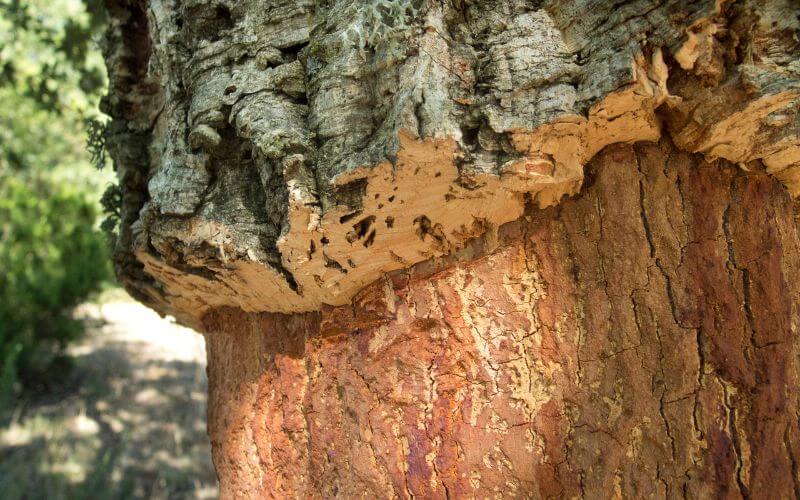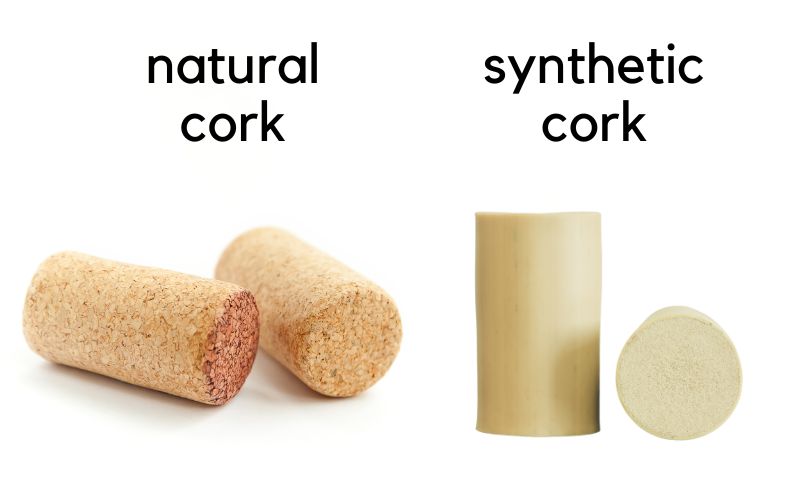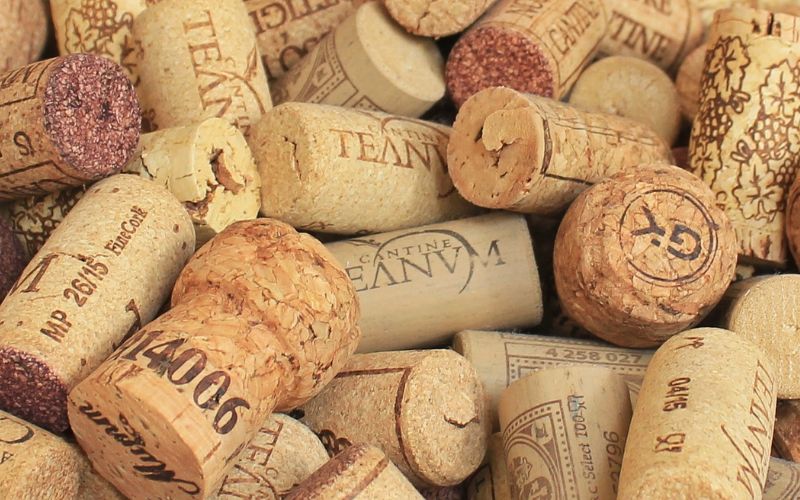If you’re a wine drinker, chances are you have a few corks laying around your house. You are probably wondering are corks recyclable? Are they biodegradable or compostable? Where can you recycle corks? And what is recycled cork used for?
The production of wine is on the rise, with more than 30 billion bottles of wine being consumed worldwide every year. This means that billions of wine corks are being popped each year. Although many screw top lids are being used these days, wine corks are still commonly used due to their reliability.
Fortunately, corks are actually recyclable, and there are many ways to recycle them. Wine corks can be recycled at drop-off points, through mail in services or they can even be composted (if natural). They can be made into many new and useful products or reused for craft or DIY purposes. By recycling and reusing wine corks, we can help reduce waste and make use of renewable products.
Read on to find out what cork is made of, how you can recycle it, and what great products recycled cork can be made into.
What Is Cork Made Of?
Wine bottle corks are typically made from the bark of the Cork Oak tree, a species of evergreen that is native to the Mediterranean region. The bark of the Cork Oak is harvested every nine years, with only the first harvest being suitable for wine corks. They are harvested in large sheets, then cut into small pieces to be used as stoppers for wine bottles.
Each cork stopper traps almost as much carbon dioxide as it takes to manufacture a wine bottle, making it an environmentally friendly and renewable material.
How is cork harvested?
Cork is harvested by hand every nine to twelve years from the outer bark of the cork oak tree. The process begins with experienced cork farmers carefully and skillfully removing the bark from the tree.
No trees are cut down during the process they simply remove the bark without harming the tree, much like shearing sheep for wool. The bark then grows back over the next 9 to 12 years. Cork trees can live up to 200 years and be harvested more than 16 times.

How wine corks are made?
Once the cork bark is harvested, it’s placed in stacks to dry out before being boiled in giant vats to remove any contaminants.
The highest quality bark is then selected and wine corks are punched out of the bark in solid cylinders.
After the cork cylinders are punched out, the scraps are then ground down and turned into agglomerated corks. This is where they ground down the remaining pieces and glue all the small bits together to create a wine cork or other products like such as insulation and packaging materials.
The use of this material in products helps to reduce the need to extract raw materials and conserves limited natural resources.
What about metal or plastic corks?
Melal screwtop lids for wine
Metal wine toppers are certainly more convenient for consumers but are they more sustainable overall?
They reduce waste by allowing you to reseal the bottle ensuring all the energy and resources that have gone into making the wine are not wasted when it goes off. However, most metal screwtop caps from wine bottles do not get recycled.
Although the metal, usually aluminum, is a highly recyclable material the small size of these screwtops makes them unrecyclable in most curbside recycling programs. This means the aluminum along with the plastic seal insert moreoften end up in landfill.
There is a way to recycle these lids if you have a metal scrapyard nearby. Simply collect the lids in a container making sure to keep the different types of metals separate. You can learn more about the types of metals and how to identify them in metal recycling facts.
Once you have collected a reasonable number then you can take them your local metal scrapyard. You might even get a couple of dollars for it.
Synthetic wine stoppers
Synthetic corks are made from plastic. Generally these corks are made from a type of low-density polyethylene. This plastic is melted down and turned into a foam to give it a similar texture to natural cork.
Synthetic corks can also be made from plant-based plastics, or bioplastics, as they have a lower carbon footprint.
The plastic is made to act like cork, so why not just use cork? The benefits of synthetic corks is to reduce the risk of cork taint where the wine is where the wine is contaminated with undesirable smells or tastes from the cork. It’s still safe to drink but not the most enjoyable. Synthetic corks also remove the need to store bottles on their sides and are much cheaper to produce.
Synthetic wine corks are not biodegradable or compostable. They are also rarely accepted in curbside recycling collection services. The corks are too small for the machinery to sort them and they would generally fall through and end up in landfill.
There are several companies that accept synthetic wine corks for recycling, they are listed later in this article.
Are natural corks recyclable?
Once natural cork has been used to make bottle stoppers, it can be recycled or composted. To recycle the cork, you can send it to a company that specializes in recycling cork for reuse.
Recycling and reuse of cork is highly encouraged for its longer life span and its potential to reduce environmental impacts. The cork is sanitized and shredded. And then the shredded cork is made into new products.
Wine corks can be recycled into products like pushpin insulation, corkboards, coasters, flooring, and even shoes. They can also be reused for crafts like keychains and foot mats.
Natural cork is also biodegradable so you can compost it, breaking it down over to become nutrient-rich soil to help plants grow. Find out more later on.
Are All Cork Products Recyclable?
Yes, all cork products are recyclable as long as you can separate the cork from any other materials it might be attached to. For example, with cork boards and coasters, you would need to separate the cork from any plastic or wood attached.
If you can’t separate the cork from other materials, then it will usually end up just getting thrown away in a landfill. In this case, it’s best to explore some of the reuse options provided later in this article.
What happens to cork in a landfill?
The majority of individual corks end up in landfills because people do not know how else to dispose of them and that they can be recycled into new products.
Natural cork will biodegrade over time, even in a landfill, but because landfills are not designed to encourage this degradation it may take a long time. In fact, it can take from 3 to 10 years for the cork to break down in landfills.
Are corks worth money?
Yes, corks can be sold for money and reused for a variety of purposes. Crafty individuals also pay for wine corks, as they can be used to make items like foot mats, coasters, keychains, and cork trivets.
Vintage wine corks can sometimes be sold to collectors for a higher price.
How to Recycle Corks
Wine corks are recyclable and fortunately, there are a few programs that provide collection points or allow you to send in your used wine corks for recycling.
Step 1: Gather your natural corks and make sure they are not synthetic. Unless you are using a recycler that accepts both types.
To work out which type of cork you have, first you will generally need to remove it from the bottle. Once it you have removed it you should be able to tell the difference easily.
- Synthetic corks are smooth like plastic and may be in many different colours.
- Natural cork will be a brown colour like the bark of trees. It looks and feels woody and will be much more spongy than the plastic ones.
- Another way to tell is that the wine will often have soaked into the natural cork whereas this doesn’t happen with plastic ones.
If you are still unsure then head over to CorkWatch. This is a database created by Recork. You can enter the wine brand and it will tell you if they use natural cork or synthetic.

Step 2: Box up your corks and take your corks to your nearest local drop-off location.
If you are posting your corks check to see if there are any limits on weight. Box up your corks and ship them using the shipping address on the appropriate specialist recycler’s website. Note: some recyclers might require you to pay for postage.
Recycling Programs for Corks
Recycling programs for corks vary by city and country. Corks are rarely accepted in curbside recycling programs because they contain glues and other binding materials that cannot be recycled through these services. Plus, they are usually too small to be sorted in the machinery.
Fortunately, there are several specialist recycling companies that accept cork for recycling, these are listed below:
- ReCork – recycles natural wine corks. Head to their website to find a location in the United States or Canada.
- Cork Forest Conservation Alliance collects and recycles these natural corks in dropboxes found at various Whole Foods stores and other retailers in the United States.
- CorkClub is a sustainability initiative funded by WidgetCo, a leader in wine cork recycling and upcycling, that allows you to send in both natural and synthetic wine corks.
- TerraCycle provides cork recycling boxes for a small fee to collect both natural and synthetic beverage corks. You can also purchase a cork recycling box in Australia or the Synthetic wine corks and stoppers box in the United Kingdom.
- Recorked UK is your best option if you live in the United Kingdom.
Buy Products Made from Recycled Cork
Cork recycling companies take the waste produced from wine production, such as wine corks and leftovers from cork trimming, and turn them into raw materials that can be used to replace petroleum-based foams and plastics in consumer products.
Not only is cork a sustainable material, but it is also flexible, durable, cushioning, and light, making it a great replacement for synthetic foam. There are also a variety of creative ways to upcycle or reuse corks, such as making coasters, foot mats, and even state-shaped wall art.
You can help even more by purchasing products made from recycled cork.
Here are some great products made from recycled cork.
Are Corks Biodegradable?
You can also try to find a creative way to reuse cork.Yes, corks are biodegradable. An object or material is said to be biodegradable if it can be broken down naturally. Natural corks are made from the bark of oak trees, which are dried and processed into corks. These corks are capable of breaking down and decomposing naturally. However, a real cork may fail to pass as a biodegradable if the gum used to bind it together is not removed. Artificial or synthetic corks are not biodegradable and should be disposed of responsibly.
Is Cork Compostable?
Yes, cork is compostable but only if it is a natural cork. Cork can be composted or turned into garden mulch. For both of these options make sure you shred the cork first to make it easier to break down.
However, synthetic cork is not compostable, and unfortunately, it can be hard to tell the difference between the two. To ensure that the cork is natural, you can use CORKWatch, a database created by ReCork. Natural cork can be broken down into small pieces and put in an organics/compost bin, or used as garden mulch. However, any plastic attached to the cork should be removed before composting, and synthetic cork should be recycled through one of the cork recycling programs.
Other Ways to Reuse Cork
Are you looking for creative ways to reuse your cork? There are actually a lot of ways to get creative with cork reuse. Whether you’re feeling handy or just want to take on a crafty project, cork is a sustainable material that’s durable, versatile, and looks great.
Here are some of the most creative ways to reuse cork:
- Cork toy boat – One way to recycle wine corks is to make little boats that float. You’ll need three wine corks, elastic bands, paper or card, scissors, and cocktail sticks or wooden skewers. All you need to do is join the corks together with elastic bands and then cut two sail shapes out of paper or card. Make holes in the sails, thread them onto the cocktail stick or skewer, and poke the pointy end into the middle cork.
- Cork keychain – Another way to recycle wine corks is to make a keychain. Cut the corks in half and then use hot glue to attach them to a round piece of cardboard. This can be used as a functional keychain that can help keep your keys afloat should they fall in a pool or beach.
- Cork thimble – If you enjoy sewing, you can use wine corks to collect your needles and pins. Poke the sharp tips into the corks and it will keep them safe.
- Floor protectors – And if you’ve just installed new flooring, you can slice up some corks and glue them to the bottom of any heavy furniture or objects that might scuff it.
- Wine Cork Trivet – If you’re looking for something to use in the kitchen, why not make a wine cork trivet? EveryDay Dishes has a great tutorial on how to make one, and it’s a great way to reuse your wine corks.
There are many more ways to recycle corks, so don’t throw them away if you can’t find a specialist recycling program– reuse them in creative ways!
Sources
- 42 Birds, Misconceptions about cork – Debunked
- Label Peelers, What Are the Advantages of Synthetic Corks?
- Wine Spectator, What are synthetic wine corks made of?














